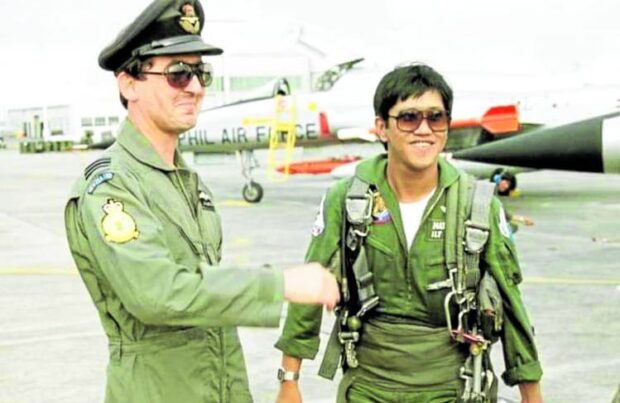
GLORY DAYS | As an Air Force reservist, Maximo Vicente Matias said he was an “element leader” in the “Cope Thunder” training. (Photo from MAXIMO VICENTE MATIAS)
MANILA, Philippines — In the early 1980s, Maximo Vicente Matias was a junior reserve officer flying Philippine Air Force (PAF) jet fighters as part of “Cope Thunder,” a US-led large-scale multinational air combat exercise regularly held in the Philippines.
Cope Thunder, which started in 1976, was discontinued when the United States left its bases in Clark and Subic in 1991. The exercise was moved to Eielson Air Force Base in Alaska the next year and was called Red Flag Alaska.
The halt in the air combat exercise on Philippine soil marked the start of the PAF’s decline as its fighter planes became obsolete and were not replaced.
Good training
More than 30 years later, the drills are making a comeback amid concerns by the two allies over an increasingly aggressive China.
This year’s Cope Thunder will be held twice, with the first scheduled May 1 to 12 and the second, from July 2 to 21.
The upcoming drills in July will include cargo aircraft to simulate the movement of a large fleet and “to test air mobility and combat readiness in a realistic operational environment,” the PAF said.
From 1981 to 1983, Matias took part in Cope Thunder, which was sometimes held twice a year. Though the PAF’s glory days and reputation for air supremacy in the region had started to wane from the 1970s, the force made up for it with good training, he said.
“When it came to training, we were… the top,” the 69-year-old said. “Even though our hardware was becoming vintage… our training didn’t decline.”
‘Russian intrusions’
He said other countries participated in Cope Thunder. Such multinational exercises were important since they “hone[d] the capabilities, skills and camaraderie” of the troops as they trained together, he said.
Back then, a Chinese threat was nowhere in their minds, Matias said, nor did he foresee that Beijing would one day turn into Washington’s biggest rival. “It’s the Russian intrusions we were guarding against,” he said.
During the Cold War, the Soviet Union occupied a naval base in Vietnam to project power in the region.
‘Poking message’
“When the Russian Bears came into the Philippine air defense identification zone, we scrambled and ran after them. The United States flew behind us in separate radar control sites,” he recalled.
After 16 years in active duty, Matias left the service in 1988. He would later work as a commercial pilot before moving to Australia, where he is now based with his family.
But he still watches military developments in the Philippines.
He said Washington and Manila should invite more countries such as Japan, South Korea, and Australia to take part in Cope Thunder “to send out a poking message to China that we want freedom of navigation” in the region.